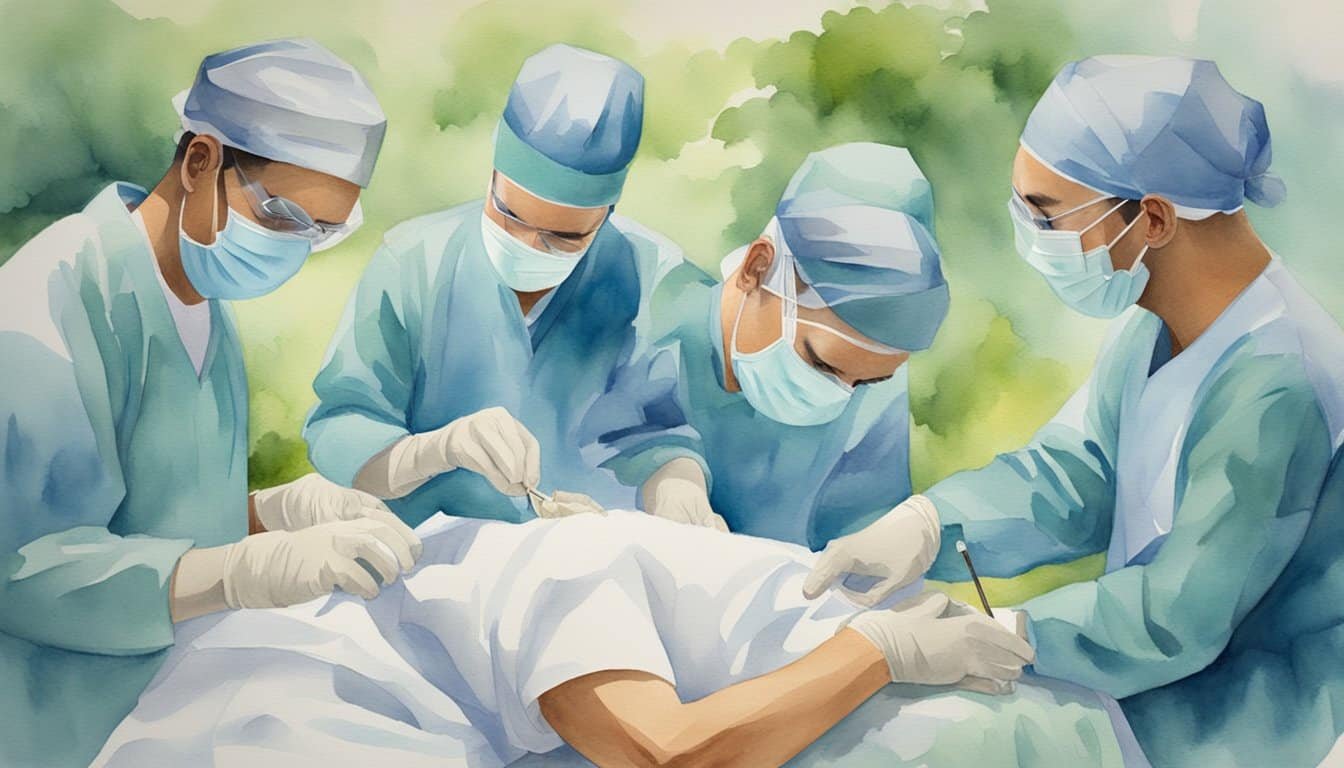Overview of Eye Transplant Surgery
Eye transplant surgery is an incredible advancement in medical science, primarily focusing on the replacement of damaged corneal tissue to restore sight to those with vision loss due to corneal issues.
Understanding Eye Transplant
When people talk about an eye transplant, they’re usually referring to a corneal transplant.
A true whole-eye transplant remains impossible at this date due to the complexity of the optic nerve, which, unlike other nerves, does not regenerate.
The retina, which captures light and sends visual information to the brain, and the sclera, the white part of the eye, also present significant challenges for transplantation.
Instead, surgery typically involves the transplantation of the cornea, the clear front layer of the eye, which has been successfully performed to restore sight in patients with damaged or diseased corneas.
Patients may receive a corneal transplant from a deceased donor, and it is one of the most common and successful transplant surgeries performed today.
The Process of Eye Transplant Surgery
The process of corneal transplant surgery is delicate and requires precise ophthalmological expertise.
The damaged or diseased cornea is removed and replaced with clear donor tissue.
This procedure typically takes one to two hours and can be done under local or general anesthesia.
The key to success lies not just in the skill of the surgery, but also in the crucial aftercare to prevent rejection of the new cornea.
The risk of rejection and other complications means that patients need to be monitored closely post-surgery.
With the advancement in microsurgical techniques and a better understanding of eye immunology, the transplantation of corneal tissue has seen significant improvements in terms of patient outcomes.
Transplanted corneal tissue can last up to 10 years or more, but in some cases, another transplant may be necessary.
The overall goal is to restore sight, and for many, the procedure is a life-changing event.
Corneal transplants have an impressive success rate, especially compared to other types of transplants, mainly because the cornea does not have a blood supply, which reduces the likelihood of rejection.
Patients can find more detailed insights into the global survey of corneal transplantation and eye banking and a brief history of corneal transplantation through these links.
Fascinatingly, while blindness due to corneal conditions can often be treated with a corneal transplant, other types of blindness are still awaiting breakthroughs that can connect the eye to the brain effectively, making true whole-eye transplants a subject of future scientific endeavor.
Advancements in Eye Transplant Research
Eye transplant surgery stands at the cusp of revolutionizing treatment for vision loss, with groundbreaking work involving stem cells and detailed animal studies fuelling the optimism in this challenging field.
Stem Cells and Regeneration
The promise of stem cells in eye transplants is profound, with researchers like Jeffrey Goldberg exploring the immense potential of these cells to regenerate damaged parts of the human eye.
In the quest to overcome conditions like macular degeneration, the use of adult stem cells has become a beacon of hope.
Experiments show that these cells possess the remarkable ability to replace or repair the specialized tissues of the eye, thereby paving the way for restorative treatments that could someday return sight to those who have lost it.
Animal Studies and Future Prospects
The path to a successful whole-eye transplant is complex, but animal experiments provide invaluable insights.
Notable work by scientists such as Aaron James and Eduardo Rodriguez points towards it being a ‘moonshot’ venture.
While still an experimental procedure, animal studies demonstrate that the intricate connections necessary for vision can potentially be reestablished.
The advancements seen in the surgical techniques and the understanding of eye integration hint at future possibilities where breakthroughs may allow for complete eye transplantations, turning science fiction into medical science reality.
Patient Care and Quality of Life

Engaging in a surgery like an eye transplant not only offers the potential to restore sight but also demands comprehensive patient care during the rehabilitative stage to ensure a smooth transition back to daily life.
Quality of life after such procedures is a primary concern, ranging from the physical adjustments to the emotional wellbeing of the patient.
Post-Surgery Rehabilitation
After an eye transplant surgery, such as corneal transplantation, patients typically undergo a rigorous post-surgery rehabilitation process.
Restoration of sight is often a gradual journey that can be improved with physical therapy aimed at strengthening the eye muscles and getting accustomed to the new corneal graft.
Since eye transplant surgeries can address issues such as glaucoma or cataracts, this rehabilitation phase is also critical for monitoring any signs of rejection and ensuring the stability of the donated eye.
Recovery might include wearing an eye patch to protect the site, while the quality of life measures assess improvements in sight and the patient’s ability to engage in daily activities like reading or driving that were previously hindered by blindness.
- Impact of Surgery on Post-Operative Vision:
- Improved perception of colors and clarity.
- Decrease in glare and light sensitivity.
Rehab can include blood flow assessment to ensure adequate blood supply to the transplanted cornea, alongside nerve repair strategies which are key for sensory recovery.
Researchers at institutions like NYU Langone Health have demonstrated the value in considering holistic care post-transplantation for optimal recovery and patient satisfaction.
Impact on Daily Living
The Impact on Daily Living for patients having undergone eye-related procedures extends far beyond clinical recovery; it redefines their interaction with the world. Sight restoration can drastically improve life quality, enabling individuals to regain independence and engage in various activities with new enthusiasm.
An individual’s sensation of smell and taste may also be enhanced with the return of vision, as senses are often interconnected.
- Daily Activities Enhanced by Restored Vision:
- Enjoyment of visual arts and media.
- Increased confidence while navigating public spaces.
For example, studies reflect that for elderly patients, successful eye transplant surgery can enhance both objective and subjective visual quality of life.
Incorporating amniotic membrane transplantation as a part of eye repair has shown promising results in minimizing scarring and improving cosmetic outcomes in patients with eye injuries.
Additionally, after a complex procedure like a face transplant, patients often encounter a long road to recovery.
Factors like reestablishing blood vessels and the functionality of prosthetics in the eye socket are critical for both the surgical success and the person’s daily living experience.




